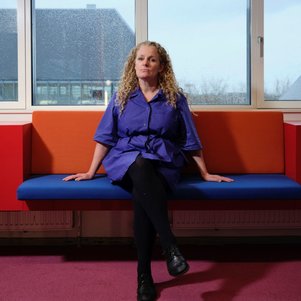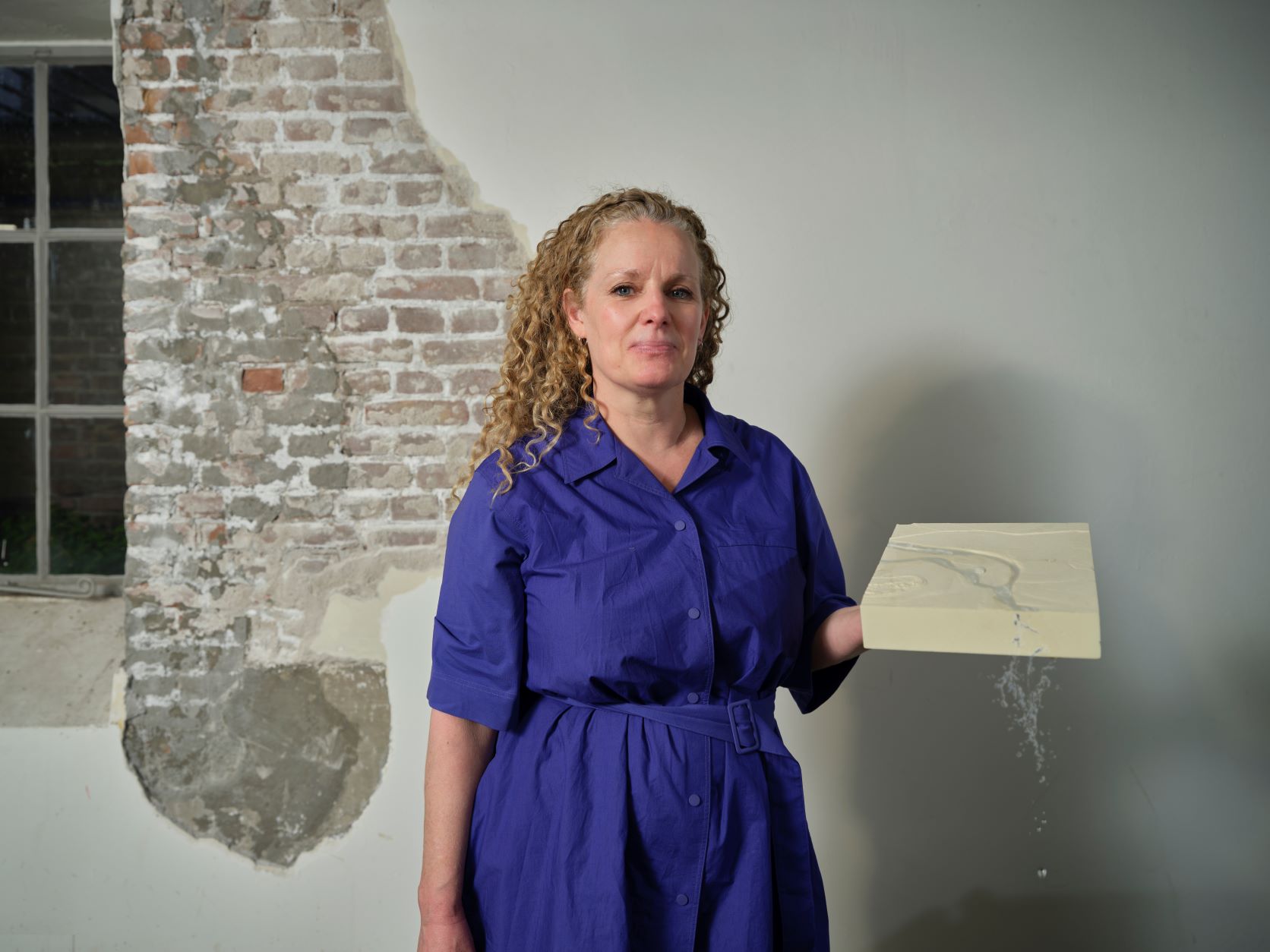Sustainable design: less protocol, more collaboration
Designing safe and future-proof cities in delta regions requires close collaboration between disciplines and a key focus on the natural system. Fransje Hooimeijer, associate professor in Environmental Technology and Design, tells us how important interdisciplinary design is and explains how to facilitate effective collaboration between different fields.
Delta regions present significant challenges to spatial designers. This is not only because of their vulnerable position alongside oceans and rivers, but also the instability of the subsoil. The Romans had good reasons for abandoning our country pretty quickly, says Fransje Hooimeijer. “Our soft wet soil prevented them from even starting anything. But these challenging conditions have enabled us in the Netherlands to develop a tradition of hydraulic engineering and urban design that has achieved worldwide acclaim. From the draining of the polders, which were planned with great precision and a high degree of spatial cohesion, right through to the Delta Works.”
Taking soil systems into account
Based in the Environmental Technology and Design section, Hooimeijer heads up the Delta Urbanism research group. In this role, she focuses on research into soil and coastal protection.

Dr. Fransje Hooimeijer
“The common denominator between the two – apart from concerning delta regions – is that I view them from the perspective of interdisciplinary and inclusive design. In this context, inclusive means that your design not only takes account of the infrastructure above ground, but also what’s going on beneath the surface. Designers often fail to properly factor in underground systems and networks, such as nature, cables and pipelines and foundations. This is despite the fact that they all play an important role in the challenges we now face, such as adapting to climate change and the energy transition. If you focus your thoughts more on the natural system, you ultimately achieve a nature-inclusive and sustainable design.”
The natural system as your point of departure
Hooimeijer believes that coastal protection is another field where we need to adopt a more flexible attitude to nature. “We need to move on from the paradigms that we can achieve everything with technology and completely protect ourselves from the water. In the face of developments such as rising sea levels and increasing extremes of weather, it’s time to adopt a different approach. Rather than focusing on reducing the chance of flooding on a national scale, we can attempt to achieve regional collaboration with the natural system in order to limit the impact of the water threat and flooding. The only problem is that we’ve shaped the system in the Netherlands to suit our needs to such an extent that we’re no longer really sure what nature really is.”
Accepting dike overflows
Hooimeijer is currently involved as an academic partner in the Interreg project Sustainable and Resilient Coastal Cities (SARCC). In a pilot in seven municipalities in France, the UK, Belgium and the Netherlands, nature-based solutions are being developed to protect coastal towns and cities. Hooimeijer: “In Vlissingen, they’ve made a street into a river in order to guide water that floods over the dike in the right direction. You can also raise the height of the dike, but that has an effect on the cityscape. But you can keep that cityscape if you accept that water will occasionally flood over the dike. As urban designers, we’ve been working with hydraulic engineers to determine how much water will flow over the dike in certain conditions and how we can redirect that water to somewhere where it can do no harm. In other words, a controlled flood with no damage or victims, while also preserving an area of green behind the dike!”

Interdisciplinary design
Collaboration between different disciplines, as is happening in Vlissingen, is very important if you want to achieve a properly integrated design, says Hooimeijer. “In the past, specialists often stayed in their own individual silos and became involved in the process in stages: first the hydraulic engineer, then the urban designer, then the engineer and so on. This results in a kind of ‘Fordism’, where the same type of design rolls off the conveyor belt every time because of the protocols followed. Our aim is to break through these protocols and take a much more precise, area-specific look at how the local system can be made resilient for the future. If you want to do that properly, it’s essential to ensure that the different disciplines are collaborating with each other from an early stage.”
Spatial relationship lost
Hooimeijer came across an example of how the ‘old-fashioned’, segregated approach turned out badly in Japan. “After the tsunami in 2011, the Japanese government pumped millions into safety measures. Engineers visited villages and asked: how high should we raise the dike? Obviously, the people living there were heavily traumatised and wanted the dikes to be as high as possible. When they were built, they suddenly found themselves looking at a concrete wall metres in height. The spatial relationship with the water had been lost, even though it’s an incredibly important relationship, especially for fishing villages. If a designer had been involved from the outset, it would be possible to develop various versions of the spatial modifications to the dike. Or an alternative layout for the village that takes greater account of the spatial quality.”
Combining figures with design
Ensuring that collaboration is effectively organised is not simply a question of bringing people together and hoping for the best, emphasises Hooimeijer. “If you do that, there’s a good chance that people will be at cross-purposes. An urban designer often takes an integrated approach, whereas an engineer focuses more on calculations and specific components, such as load-bearing capacity, and is preoccupied with the figures. For an effective dialogue, you need to avoid going into too much detail too soon and start with the broad outlines instead. You can then gather information and ideas and gradually work towards an integrated plan. This is how an urban designer learns all about the inner workings of a town or city at an early stage. It also helps if the people attending meetings varies from time to time. We’ve developed methods for making dialogue productive.”
Understanding each other’s interests and language
According to Hooimeijer, it can be incredibly challenging ensuring that collaboration runs smoothly and finding the right ways of working. “It’s really useful if you understand how and why the other person approaches things in a particular way. That’s something I’m currently noticing with the project in Vlissingen. Hydraulic engineers see the inundation – deliberately flooding a specific area – as a whole, whereas we look at things from a spatial perspective and want to know exactly how many cubic metres of water are involved. But if I ask that, they don’t always understand why it’s relevant. On the other hand, I need to understand that I can’t expect other people to automatically calculate something in cubic metres or build a dike in a computer model at the right scale. If you communicate effectively about what’s important or why you’re approaching something in a certain way, there’s much more mutual understanding and collaboration.”
Ideal link between disciplines
For Hooimeijer, coordinating interdisciplinary collaboration appears to come naturally. “First of all, I prefer moving between groups than being part of just one. I also like to bring together different disciplines and ensure that they’re productive and any misunderstandings are resolved. My wide-ranging background helps in this. At secondary school, for example, my key subjects included drawing, physics, chemistry and maths. After that, I studied Design at the Academy of Art, and Art and Culture Sciences at Erasmus University and then did a PhD in Urbanism. My work now brings together all of these disciplines.
Fransje Hooimeijer is involved in research across the world. Her work on soil research not only includes projects in the Netherlands, but also South Africa and she has also contributed to a major European partnership project. She recently published a book on soils systems and design in the Netherlands and Belgium (‘Ontwerpen met de ondergrond in Nederland en België’).
Hooimeijer is the leader of the Delta Urbanism research group. Her research into delta regions and coastal protection has included Japan, India, Buenos Aires and Houston (VS). Some of these projects are part of the Redesigning Deltas research programme.
